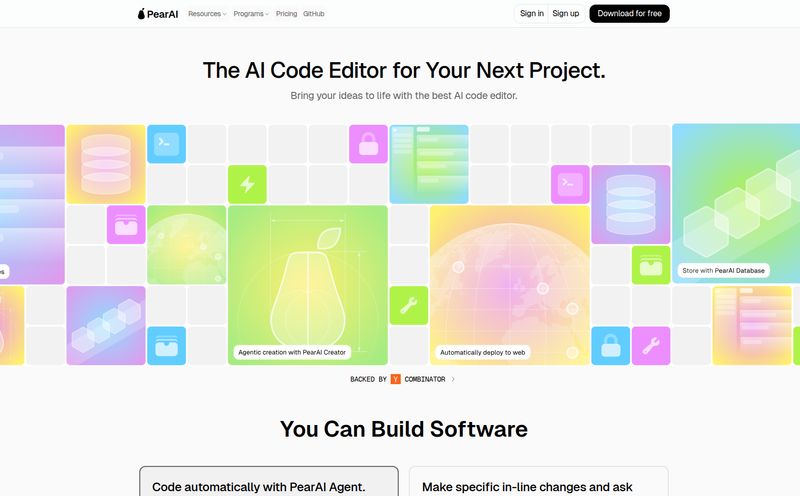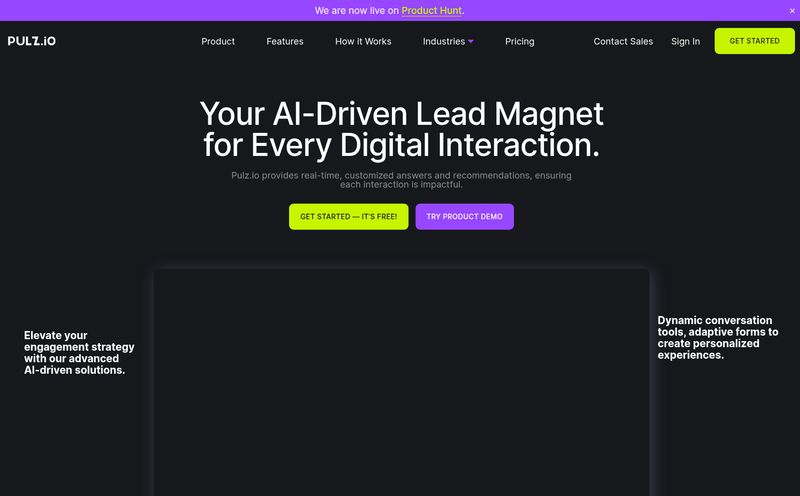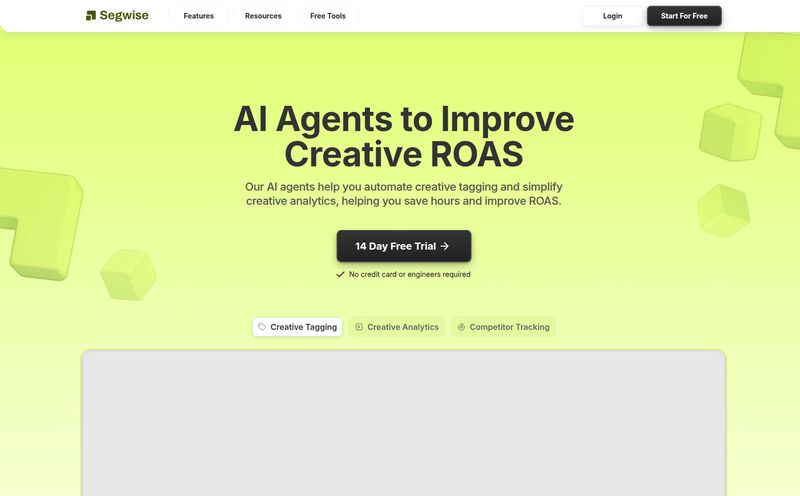As a digital marketing and SEO guy, I basically live inside spreadsheets. Google Sheets, Excel... they're my comfort blanket. It's where the data lives, where the plans are hatched, and where the magic (and a whole lot of VLOOKUPs) happens. But there's always been this wall between my cozy spreadsheet world and the powerful, slightly terrifying world of automation.
For years, I’ve cobbled together solutions with tools like Zapier or Make.com. And don't get me wrong, they're powerful. But sometimes, setting up a multi-step “Zap” feels like performing open-heart surgery with a pair of chopsticks. You’re mapping APIs, testing triggers, and praying you didn’t miss a single, tiny configuration setting that will bring the whole thing crashing down. It's a lot.
So when I heard about WorkflowPad, the pitch immediately grabbed me: AI-powered automation, but inside a spreadsheet. No code? A familiar interface? It sounded too good to be true. It sounded like someone finally built the bridge I’d been waiting for. But does it actually deliver?
So What Exactly is WorkflowPad?
At its core, WorkflowPad is a no-code platform that uses an AI-enhanced spreadsheet as its main interface. Imagine if Google Sheets had a baby with a powerful automation engine. That’s pretty much it. The whole idea is to let you build complex workflows, connect to other apps, and automate those tedious, repetitive tasks that eat up your day—all from the comfort of a familiar grid of rows and columns.
You’re not writing Python scripts or wrestling with webhooks. You’re typing simple commands into cells, connecting data points visually, and letting the AI do the heavy lifting in the background. Whether it's managing a marketing budget, tracking leads from a form, or pulling data from multiple sources into one place, the goal is to make it intuitive. Simple, right?

Visit WorkflowPad
The Real Magic Is The Familiarity
The single biggest win for WorkflowPad, in my opinion, is that they didn't try to reinvent the wheel. The learning curve for so many new SaaS tools is a monster. You spend the first week just trying to figure out where the buttons are. With WorkflowPad, if you know how to use a spreadsheet, you're already 80% of the way there. This lowers the barrier to entry so, so much.
It’s a smart move. People like me, and probably you, are already building makeshift project management systems and CRMs in spreadsheets. We're comfortable there. WorkflowPad just leans into that and gives our trusty old spreadsheets a superpower.
Key Features That Actually Matter
Okay, let's get into the nitty-gritty. The website talks a big game, but here’s what stood out to me.
- The No-Code Workflow Builder: This is the heart of the platform. You build automation sequences by combining different actions and triggers within the sheet. It feels less like programming and more like putting together a set of instructions in plain English. For anyone who has been intimidated by automation, this is a game-changer.
- AI-Enhanced Tools: The 'AI' part isn't just marketing fluff. It helps with data analysis, generating content, and cleaning up messy data right within your workflow. For instance, you could have it automatically categorize customer feedback or draft social media posts from a list of topics. It's a real time-saver.
- Loads of Integrations: A workflow tool is only as good as the other apps it can talk to. WorkflowPad claims to integrate with over 100 popular tools. I'm talking about your Slacks, your Google Drives, your CRMs, your social media platforms... the usual suspects are all there. This is what turns it from a clever spreadsheet into a central hub for your business operations.
- Community Workflow Templates: This is a sneaky-good feature. Instead of starting from scratch, you can grab a pre-built template for common tasks like “Track Project Milestones” or “Manage Ad Spend.” You can see how others have built their wokflows and adapt them for your own needs. It’s a fantastic way to learn the ropes and get results quickly.
Who Should Be Using WorkflowPad?
I see this being a perfect fit for a few groups. Small business owners who wear a dozen hats and don't have time to become automation experts. Marketing teams trying to streamline their content calendars and lead tracking. Project managers who need to connect different tools without bugging the dev team. Basically, if you're a “spreadsheet person” who has always wanted to automate more of your work but found other tools too complex, WorkflowPad is calling your name.
It’s not necessarily for the enterprise-level corporation that needs incredibly complex, custom-coded solutions with thousands of concurrent processes. It’s for the rest of us. The scrappy ones who need to get more done with less.
Let's Talk Turkey: The Pricing
Alright, the all-important question: how much does it cost? The pricing structure is pretty straightforward and based on credits (which are used for AI actions and workflow runs) and the number of workflows you can run at the same time. Here's a quick breakdown of their yearly plans, which offer a better rate:
| Plan | Price (Yearly) | Key Features |
|---|---|---|
| Starter | $19 /month | 500 credits, 5 concurrent workflows, daily data sync |
| Growth | $49 /month | 2000 credits, 25 concurrent workflows, hourly data sync |
| Enterprise | Custom | 100,000+ credits, unlimited workflows, real-time sync |
Note: They also offer monthly plans which are slightly more expensive per month. The Starter plan at $19/mo (billed yearly) feels like a very accessible entry point for freelancers or small teams to get their feet wet.
The Potential Downsides
No tool is perfect, right? It's important to be realistic. The main limitations seem tied directly to the pricing tiers. The number of credits you get and the number of workflows you can run simultaneously are capped. If you're a power user running dozens of complex, high-frequency automations, you could hit those limits on the Starter or Growth plans. You'll need to be mindful of your usage, especially with the AI features that consume credits. But for most small to medium use cases, I think the limits are pretty generous.
My Final Verdict on WorkflowPad
So, am I sold? Yeah, I kinda am. WorkflowPad isn't trying to be the most powerful automation tool on the planet. Instead, it’s trying to be the most accessible. It smartly leverages the one tool that nearly every professional already knows how to use: the spreadsheet.
It’s a fantastic bridge for people who are intimidated by traditional automation platforms but are desperate to save time and streamline their processes. It's practical. It's clever. And it feels like a natural evolution of the humble spreadsheet. For me, that’s a huge win. I'll definitely be keeping a close eye on this one and will probably be moving some of my more annoying reporting tasks over to it soon.
Frequently Asked Questions about WorkflowPad
Is WorkflowPad difficult to learn?
Not at all, especially if you're already familiar with spreadsheet software like Excel or Google Sheets. The interface is designed to be intuitive, and the community templates provide a great starting point, so you don't have to build everything from scratch.
What kind of tasks can I automate with WorkflowPad?
A whole range! Think about anything repetitive you do. You could automate social media content scheduling, lead data entry from web forms into a CRM, generating weekly reports, tracking expenses, or even managing simple project timelines.
How do the 'credits' work in the pricing plans?
Credits are consumed when your workflows run actions, particularly the AI-powered ones. A simple action like updating a cell might cost very little, while a more complex one like using AI to summarize a block of text would use more credits. Each plan comes with a monthly allowance.
Can I connect WorkflowPad to my existing tools?
Yes, that's one of its main strengths. It offers integrations with over 100 common applications, including tools like Slack, Trello, Google Calendar, HubSpot, and many more, allowing you to create workflows that span across your different platforms.
Is WorkflowPad a good alternative to Zapier or Make?
It can be! For users who find Zapier or Make.com a bit too technical or complex, WorkflowPad is a great alternative. It prioritizes ease of use and a familiar spreadsheet environment over having the absolute maximum number of features and deepest customisation options.



